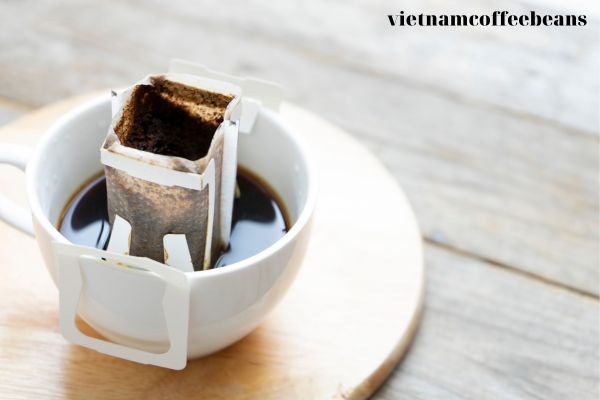Do you want to unlock the secrets to the perfect cold brew? I’ve been there. It can be tricky to get the right flavor profile, but don’t worry! With the right method, coffee selection, grind size, and brew ratio, you can easily make a delicious cup of this.
Cold drip and immersion brewing are two popular methods, and the classic cold brew concentrate ratio is one part coffee to five parts water. If you’re looking for a ready-to-drink cold brew, then the Bruer cold drip device and a one part coffee to 12-15 parts water ratio is best.
Cold brew coffee is a delicious and refreshing way to enjoy coffee, especially during the warmer months. Making cold brew coffee at home is easy and can be done in a few easy steps for cold brew coffee.
With these tips, you can craft an amazing cup of this with a unique flavor profile. So let’s get started on your journey to the perfect drink!
Key Takeaways
- It can be made using either the drip or immersion method, with immersion brewing allowing for a fuller extraction compared to drip brewing.
- The best coffee for this depends on how it will be served, with espresso blends working well if milk will be added and lighter roasted coffees preferred for serving straight up.
- A grinder that can produce a coarser grind size is needed for this, and filtered water is important for the brewing process.
- Adjusting the brew ratio based on the size of the brewer and making a concentrate allows for versatility in serving options, while brewing with a ratio of 1:12 to 1:15 produces a ready-to-drink cold brew.
What is Cold Brew Coffee?

This coffee is the perfect pick-me-up for those days when you just can’t seem to get going! It’s a unique type of coffee that has origins dating back to Japan in the 1600s.
This is a method of steeping coarsely ground coffee for 12-24 hours in cold water, resulting in a smooth, flavorful coffee cup. The long steeping process extracts unique flavor profiles that are far more subtle than traditional hot coffee.
It also produces a lower acidity and a mellow, sweet taste. Cold brew coffee can be served over ice, with milk, or with a variety of sweeteners and flavorings. With its unique flavor and lower acidity, this is a great choice for those who prefer a smoother taste.
Choosing the right equipment for making this brew can be a bit daunting. There are several options available, from French presses and cold brew makers to DIY methods like mason jars. The key is to find which coffee brewing method is right for you that works for your lifestyle and budget. Once you have the right equipment, it’s easy to make delicious cold brew coffee at home.
Cold Brew Methods
When it comes to Cold Brew Methods, it’s essential to master the art of brewing, ensuring you follow the right way to brew Chemex coffee, as it unlocks a smooth and refined flavor profile that is unmatched by any other brewing technique.
To get started with this, I recommend learning about different brewing methods and equipment. Some popular options include drip or immersion brewers, grinders, and Toddy brewers. For example, I recently purchased a Baratza Encore grinder and a Toddy brewer to make this at home.
It can be made using either the drip or immersion method. The right grinder is key for this, as a coarser grind is needed. Great choices for grinders include the Baratza Encore or Breville Smart Grinder Pro.
Additionally, the quality of water used for this is important, so filtered water is a must.
Choosing the Right Equipment
When it comes to choosing the right equipment for cold brew coffee, it’s important to consider the benefits of percolation brew, as it offers a unique and flavorful extraction method that can enhance the overall cold brew experience.
Choosing the right equipment for your cold coffee brewing can make a huge difference in the flavor of your final product. Did you know that the more expensive equipment is almost always worth it, as it can yield up to 10% more flavor in your coffee?
Here are 4 key aspects to consider when selecting the right equipment for brewing:
- Grind selection – The grind size of your coffee beans determines how quickly the flavor is extracted, so choosing the right grind size is essential. Too fine of a grind and your coffee will be over-extracted, while too coarse of a grind will result in an under-extracted flavor.
- Filters – Selecting the right filter can also make a difference in the flavor of your brew. Using a paper filter removes most of the oils and some of the sediments, while metal filters will allow more oils and sediment to pass through.
Brewing vessel – The type of vessel used for brewing can also affect the flavor of the coffee. While a larger vessel may be more convenient, it will take longer for the coffee to steep and will result in a weaker flavor.
Steep time – Determining the appropriate steep time is essential for getting the most flavor out of your coffee. Too short of a steep time will result in a weak brew, while too long of a steep time can make your coffee too bitter.
Considering these 4 key components of equipment selection will help you make the best choice for your coffee. Once you have the correct equipment in place, you’re ready to move on to the next step of preparing the coffee.
Coffee Selection For Cold Brew

Choosing the right coffee for your cold brew is key to creating the perfect cup. I look for different roast profiles, flavor profiles, and origins to find the one that best fits my tastes. Here are some tips I use when selecting coffee:
- Go for espresso blends if milk will be added.
- For straight up cold brew, lighter roasts are ideal.
- Heavy body and fruity flavors are my go-to for natural or honey processed coffees.
- Central American coffees don’t show their potential in cold brewing.
- Sample different flavors and experiment with blends to find the perfect one.
To serve, you can dilute the cold brew with water or milk, or try it over ice with a bit of sugar or honey. And don’t forget to experiment with different brew ratios to find your perfect drink!
| Strength | Ratio |
|---|---|
| Light | 1:15 |
| Medium | 1:10 |
| Strong | 1:7 |
Cold Brew Ratio
For the this brew ratio, I usually use a 1 to 15 ratio of ground coffee to water. This ratio allows for a balanced and flavorful cold brew concentrate. However, it is important to note that the ratio can be adjusted based on personal preference and the size of the brewer.
When making this concentrate, it is best to use a 1 to 5 ratio of coffee to water. This higher concentration of coffee results in a stronger and more concentrated brew, which can be diluted with water or milk when serving.
When storing this, it is important to use properly sealed containers or airtight lids to maintain freshness. It concentrate can be stored in the fridge for up to 7 days, but it is recommended to consume ready-to-drink cold brew within a few days. Be sure to check for any signs of spoilage before consuming.
Proper storage is essential to preserve the flavors of this and prevent any contamination.
How To Make Cold Brew Coffee

I craft my own cold brew recipes and adjust my ratios to find the perfect cup. When it comes to Cold Brew, there are two popular recipes: Cold Brew Concentrate and Cold Drip.
Cold Brew Concentrate is made using an immersion brewer like the Toddy brewer. It involves adding 400 grams of coarsely ground coffee to the brewer and letting it brew overnight.
Cold Drip requires a device like the Bruer cold drip. The importance of grind size in cold brew cannot be overstated. A coarse grind is needed for both recipes. Once ground, 60 grams of coffee is added to the brewer before setting the drip rate and letting it brew for 4-5 hours.
How To Serve Cold Brew Coffee
Experimenting with creative ways to serve cold brew can open up a world of flavor combinations! Enjoy a cold brew-infused dessert, get creative with cocktails, or try a cold brew popsicle. Here are some unique serving ideas:
- Add syrups and spices to cold brew for interesting flavor combinations.
- Use cold brew as the base for coffee-inspired desserts.
- Incorporate cold brew into smoothies for a refreshing twist.
- Experiment with using cold brew in cooking or baking.
- Create popsicles or ice cream with cold brew for a summer treat.
The possibilities are endless when it comes to creative cold brew recipes. With the right ingredients and a little bit of imagination, you can create unique and delicious drinks and treats. So go ahead and explore the world of this brew to find your own unique flavor combinations.
Advanced Cold Brew Techniques
For coffee connoisseurs looking to take their cold brew game to the next level, there’s a world of advanced techniques to explore. Infusing flavors, experimenting with different iced recipes, and learning the intricacies of the making process can all help to enhance the cold brew experience.
From using special grinds and blending multiple coffee beans to exploring new extraction methods and customizing the brew time, there are endless opportunities to craft the perfect cup.
One of the most exciting aspects of this brew is the freedom to experiment. By infusing flavors or adding special ingredients to the mix, it’s possible to create a unique flavor profile that caters to individual tastes.
Iced recipes, such as cold brew floats and cold brew cocktails, can also help to elevate the brew and make it feel like a special treat. Lastly, exploring different extraction methods and brewing times can help to bring out the nuances of the coffee beans and create a cup that truly stands out.
For those looking to take their cold brew game to the next level, here are a few tips to get started:
- Try out some special grinds and blends.
- Experiment with extraction methods.
- Customize the brew time to your tastes.
- Infuse flavors or add special ingredients.
Frequently Cold Brew Questions
Conclusion
I’m sure you can see why cold brew is so popular. It’s an incredibly smooth and delicious cup of coffee that can be made at home. But I know what you’re thinking: it takes too long! I’m here to tell you that it doesn’t have to.
With the right equipment and some simple instructions, you can have a delicious drink in just a few hours. The process is simple and the results are worth the wait. So go ahead, grab your beans and equipment, and start making your own cold brew. Your taste buds will thank you!
Hope you get useful information from the article, if you have any questions or want to learn about coffee method such as phin coffee technique, read more articles about coffeebeans, please visit the website: vietnamcoffeebeans
Thank you!





